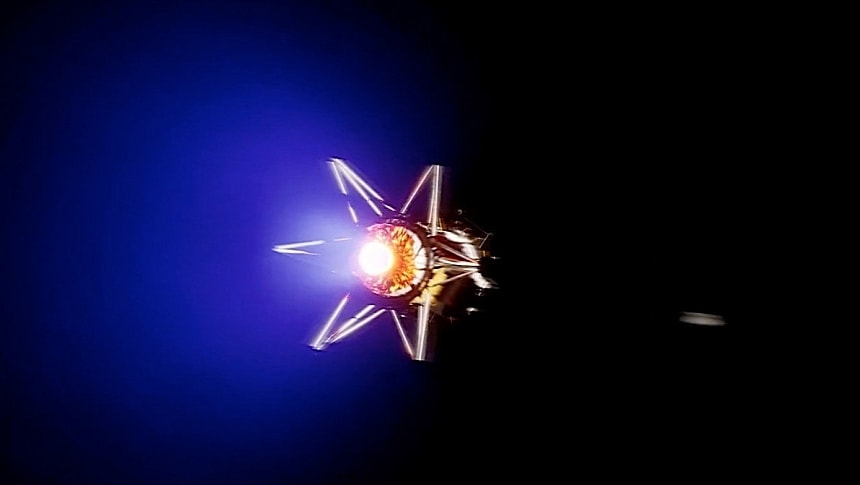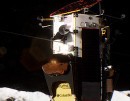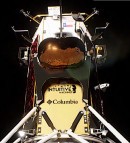2024 kicked off with a bang for space exploration, as in the first days of the year the American space agency and a private company called Astrobotic launched something called the Peregrine. A lander by trade, the tech was supposed to put America on the surface of Earth's satellite for the first time in decades, but it sadly failed.
Peregrine was the first mission of a program called Commercial Lunar Payload Services (CLPS). It's a NASA effort designed to take advantage of technologies and methods developed by private space companies to advance the goals of the Artemis Moon exploration program.
Because of this CLPS has a long list of partners (14 of them, to be precise) that will launch payloads to the Moon for the space agency and other private partners.
The second private company to launch something as part of the CLPS program is called Intuitive Machines. On February 15, it used a SpaceX Falcon 9 to launch a Nova-C-class lander called Odysseus from Launch Complex 39A at the Kennedy Space Center in Florida.
Unlike what happened to the Peregrine, the Odysseus seems to be going without a hitch. In fact, the spacecraft has covered most of the distance to the Moon, and it is getting ready to make a historic touchdown on February 22.
As per the details shared by NASA, the landing is expected to begin after 5:49 PM EST on Thursday.
Odysseus will descend on a region of the Moon called Malapert A, near the body's South Pole, the target area for all upcoming Artemis missions. NASA will broadcast the entire mission live on NASA+, NASA Television (which can be streamed on several platforms, including social media), and the NASA app.
The agency will begin broadcasting at 4:15 PM EST "as the landing milestones occur." If successful (and there is no reason to believe it will not be) the landing will be followed by "a news conference to discuss the mission and science opportunities."
Odysseus carries with it to the Moon six NASA-backed science instruments and an equal number of privately-funded tech. On the NASA side of things, the most impressive equipment is the Lunar Node-1 navigational experiment, which may very well open the doors to a proper navigation system on the surface of the satellite.
The most anticipated private piece of tech is in my view the EagleCam camera. Simple in design and scope, the hardware will fly off the Odysseus as it comes down to land to give us "the world's first-ever third-person picture of a spacecraft making an extraterrestrial landing."
Quite something to look forward to, this landing. As usual, we'll be all over it, so stay tuned for all the juicy bits.
Because of this CLPS has a long list of partners (14 of them, to be precise) that will launch payloads to the Moon for the space agency and other private partners.
The second private company to launch something as part of the CLPS program is called Intuitive Machines. On February 15, it used a SpaceX Falcon 9 to launch a Nova-C-class lander called Odysseus from Launch Complex 39A at the Kennedy Space Center in Florida.
Unlike what happened to the Peregrine, the Odysseus seems to be going without a hitch. In fact, the spacecraft has covered most of the distance to the Moon, and it is getting ready to make a historic touchdown on February 22.
As per the details shared by NASA, the landing is expected to begin after 5:49 PM EST on Thursday.
Odysseus will descend on a region of the Moon called Malapert A, near the body's South Pole, the target area for all upcoming Artemis missions. NASA will broadcast the entire mission live on NASA+, NASA Television (which can be streamed on several platforms, including social media), and the NASA app.
The agency will begin broadcasting at 4:15 PM EST "as the landing milestones occur." If successful (and there is no reason to believe it will not be) the landing will be followed by "a news conference to discuss the mission and science opportunities."
Odysseus carries with it to the Moon six NASA-backed science instruments and an equal number of privately-funded tech. On the NASA side of things, the most impressive equipment is the Lunar Node-1 navigational experiment, which may very well open the doors to a proper navigation system on the surface of the satellite.
The most anticipated private piece of tech is in my view the EagleCam camera. Simple in design and scope, the hardware will fly off the Odysseus as it comes down to land to give us "the world's first-ever third-person picture of a spacecraft making an extraterrestrial landing."
Quite something to look forward to, this landing. As usual, we'll be all over it, so stay tuned for all the juicy bits.













